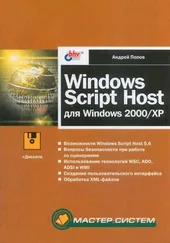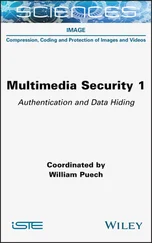As an administrator, you need to take two main steps to enable users throughout a network to access print devices connected to Windows Server 2012 R2. First, you need to set up a print server, and then you need to use the print server to share print devices on the network.
This chapter covers the essentials of setting up shared printing and describes how users access printers on the network. You’ll also find advice on administering printers and troubleshooting printer problems, which is where we’ll begin.
Managing the Print and Document Services role

A provides a central location for sharing printers on a network. When many users require access to the same printers, you should configure print servers in the domain. In earlier releases of the Windows Server operating system, all servers were installed with basic print services. With Windows Server 2012 R2, you must specifically configure a server to be a print server.
Two types of print devices are used on a network:
■ Local print deviceA print device that’s physically attached to a user’s computer and employed only by the user who’s logged on to that computer.
■ Network print deviceA print device that’s set up for remote access over the network. This can be a print device attached directly to a print server or a print device attached directly to the network through a network interface card (NIC).
NOTE The key difference between a local printer and a network printer is that a local printer isn’t shared. You can easily make a local printer a network printer. To learn how to do this, see “Starting and stopping printer sharing” later in this chapter.
You install new network printers on print servers or as separate print devices attached to the network. A print server is a workstation or server configured to share one or more printers. These printers can be physically attached to the computer or connected to the network. The disadvantage of running a print server with a workstation operating system instead of a server operating system is the limited number of allowed connections. With Windows Server 2012 R2, you don’t have to worry about operating system-enforced connection limits.
You can configure any Windows Server 2012 R2 system as a print server. The print server’s primary job is to share print devices on the network and to handle print spooling. The main advantages of print servers are that printers have a centrally managed print queue and you don’t have to install printer drivers on client systems.
You don’t have to use a print server, however. You can connect users directly to a network-attached printer. When you do this, the network printer is handled much like a local printer attached directly to the user’s computer. The key differences are that multiple users can connect to the printer and that each user has a different print queue. Each individual print queue is managed separately, which can make administration and problem resolution difficult.
An understanding of how printing works can go a long way when you’re trying to troubleshoot printer problems. When you print documents, many processes, drivers, and devices work together to print the documents. If you use a printer connected to a print server, the key operations are as follows:
■ Printer driverWhen you print a document in an application, your computer uses a printer driver to handle the printing process. If the print device is attached to your computer physically, the printer driver is accessed from a local disk drive. If the print device is located on a remote computer, the printer driver might be downloaded from the remote computer. The availability of printer drivers on the remote computer is configurable by operating system and chip architecture. If the computer can’t obtain the latest printer driver, an administrator probably hasn’t enabled the driver for the computer’s operating system. For more information, see “Managing printer drivers” later in this chapter.
■ Local print spool and print processorThe application from which you print uses the printer driver to translate the document into a file format that the selected print device can understand. Your computer then passes the document to the local print spooler. The local spooler in turn passes the document to a print processor, which creates the raw print data necessary for printing on the print device.
■ Print router and print spooler on the print serverThe raw data is passed back to the local print spooler. If you’re printing to a remote printer, the raw data is then routed to the print spooler on the print server. On Windows Server 2012 R2 systems, the printer router, Winspool.drv, handles the tasks of locating the remote printer, routing print jobs, and downloading printer drivers to the local system if necessary. If any of these tasks fails, the print router is usually the culprit. See “Solving spooling problems” and “Setting printer access permissions” later in this chapter to learn about possible fixes for this problem. If these procedures don’t work, you might want to replace or restore Winspool.drv.
The main reason for downloading printer drivers to clients is to maintain a single location for installing driver updates. This way, instead of having to install a new driver on all the client systems, you install the driver on the print server and enable clients to download the new driver. For more information on working with printer drivers, see “Managing printer drivers” later in this chapter.
■ Printer (print queue)The document goes from the print spooler to the printer stack-which in some operating systems is called the print queue for the selected print device. When in the queue, the document is referred to as a print job -a task for the print spooler to handle. The length of time the document waits in the printer stack is based on its priority and position within the printer stack. For more information, see “Scheduling and prioritizing print jobs” later in this chapter.
■ Print monitorWhen the document reaches the top of the printer stack, the print monitor sends the document to the print device, where it’s actually printed. If the printer is configured to notify users that the document has been printed, you get a confirmation message.
The specific print monitor used by Windows Server 2012 R2 depends on the print device configuration and type. You might also have monitors from the print device manufacturer. This dynamic-link library (DLL) is required to print to the print device. If it’s corrupted or missing, you might need to reinstall it.
■ Print deviceThe print device is the physical device that prints documents on paper. Common print device problems and display errors include Insert Paper Into Tray X, Low Toner, Out Of Paper, Out Of Toner or Out Of Ink, Paper Jam, and Printer Offline.
Group Policy can affect your ability to install and manage printers. If you’re having problems and believe they’re related to Group Policy, you should examine the key policies in the following locations:
■Computer Configuration\Administrative Templates\Printers
■User Configuration\Administrative Templates\Control Panel\Printers
■User Configuration\Administrative Templates\Start Menu And Taskbar
REAL WORLD Windows Server 2012 R2 is a 64-bit operating system and a print queue running on this operating system cannot function without a native 64-bit printer driver. Because of this, you should verify the availability of required 64-bit print drivers before migrating print queues from servers running 32-bit operating systems to Windows Server 2012 R2. Keep in mind that if your organization has older printers still in use, those printers might have third-party 32-bit drivers and there might not be 64-bit equivalents.
Читать дальше







